This article originally appeared in the April 2023 issue of CONNECT.
Mark Christensen (Fukuoka)
Where to Find Japan’s Fleeting Florals
With the warm sun beginning to wrestle nature out of winter’s grasp, the first signs of spring have arrived in Japan. In the milder weather of the south, the Island of Kyushu is host to a number of early floral blooms.
In the old mining town of Omuta, deep in southern Fukuoka, lies the quiet Fukoji temple. Off the tracks and nestled on Mt. Miike, which overlooks the city, it is very easy for the casual visitor to miss. But it holds some fascinating secrets.
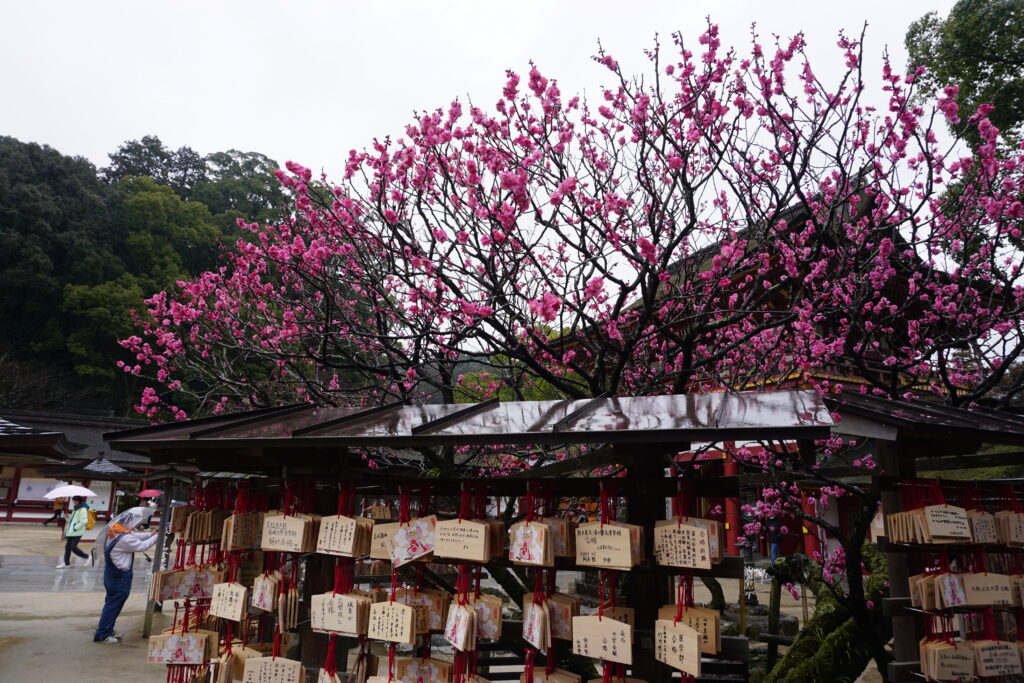
According to legend, the mountain was once the site of a very unusual battle. When a princess was attacked by a terrible serpent, a humble river crab came to her rescue, heroically clipping the mighty serpent into pieces, forming Mt. Miike’s three ponds. Today, Mt. Miike shows blood red every spring, but for a very different reason: plum trees!
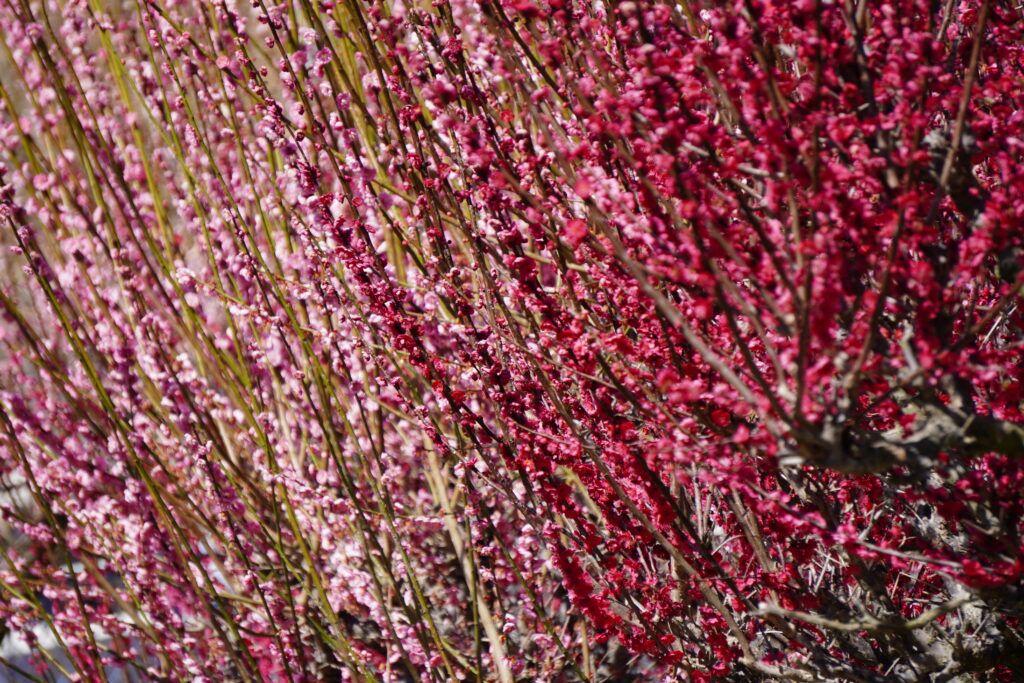
Unlike the more famous sakura (cherry blossoms), plum trees bloom as much as a month earlier and come in a wide variety, including crimson, pink, pink-white, and yellow-white. They also have a beautiful fragrance, which could be compared to honey with hints of fruit.
Fukoji Temple holds a dense grove of these flowering trees, which is a popular site for locals. It’s also a great spot to view mejiro. Also known as the Warbling White Eye, these beautiful green birds love to feed on the flowers.
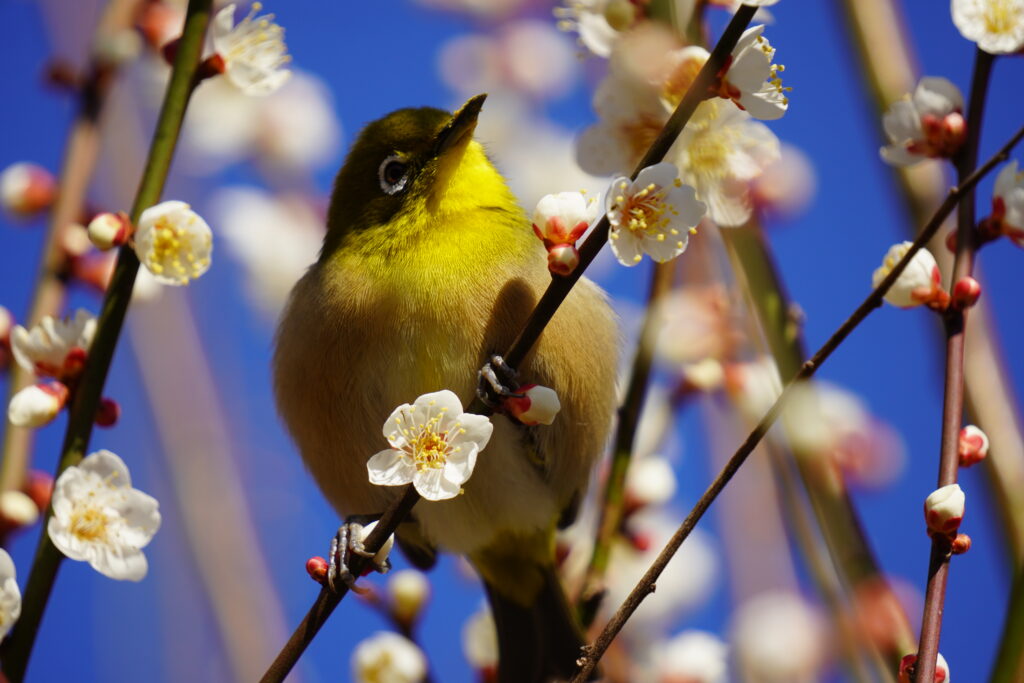
Further to the north, Fukuoka also holds one of the most famous places to view plum blossoms: Dazaifu Tenmangu.
In the past, a brilliant Heian-era scholar and diplomat named Sugawara no Michizane fell afoul of court politics and was banished to Fukuoka. When he died in exile, misfortune and lightning strikes assailed his opponents, earning the fear of the court, and he was eventually deified as Tenjin, a god of storms. Nowadays, he is considered the patron god of learning and is popularly worshipped at his shrine by students seeking to pass their final exams.

Curiously, Tenjin was deeply fond of plum blossoms. It was said that his love of plums was so great that one of his favorite trees in Kyoto actually uprooted itself and flew to Dazaifu, where it is now honored as “Tobi-Ume,” the flying plum tree, which flowers white every spring. The tree is so famous, in fact, that it actually has a notable cameo in the popular anime Bleach!
Today, plum trees are a key part of Dazaifu’s identity. The shrine itself uses a plum symbol, and popular snacks like Umegae Mochi feature these blossoms. The grounds themselves, fittingly, are covered in numerous plum trees, with even more in the nearby courtyards, around the ponds, and a large grove behind the main sanctum. It’s an excellent place to enjoy one of spring’s brightest flowers!
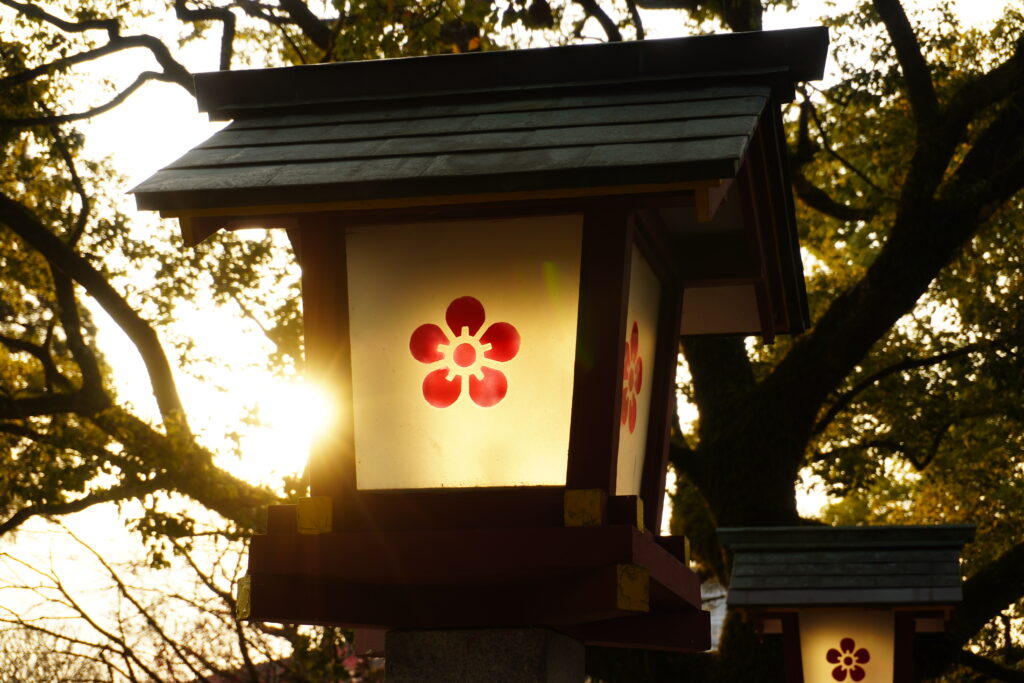
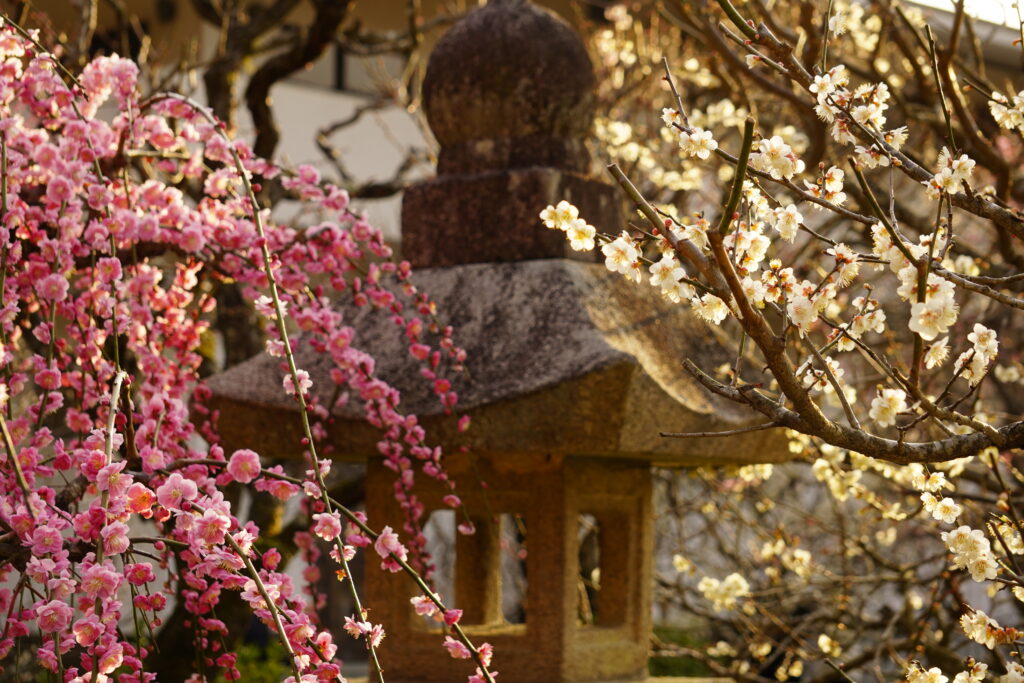
As spring progresses, Japan’s most famous flower, the sakura, begins its northern journey.
In Fukuoka, some excellent spots to see sakura are at Nishi and Maizuru Park, which are in very close proximity to each other.
Maizuru park is located on the grounds and ruins of the old Fukuoka Castle. While the castle has been largely lost to time, the old stone bases of the castle can still be seen. Today, they are surrounded by a beautiful park that hosts a large number of cherry trees. During the last weeks of March and the first week of April, it’s a popular site for large hanami parties and festivities, as well as many vendors.
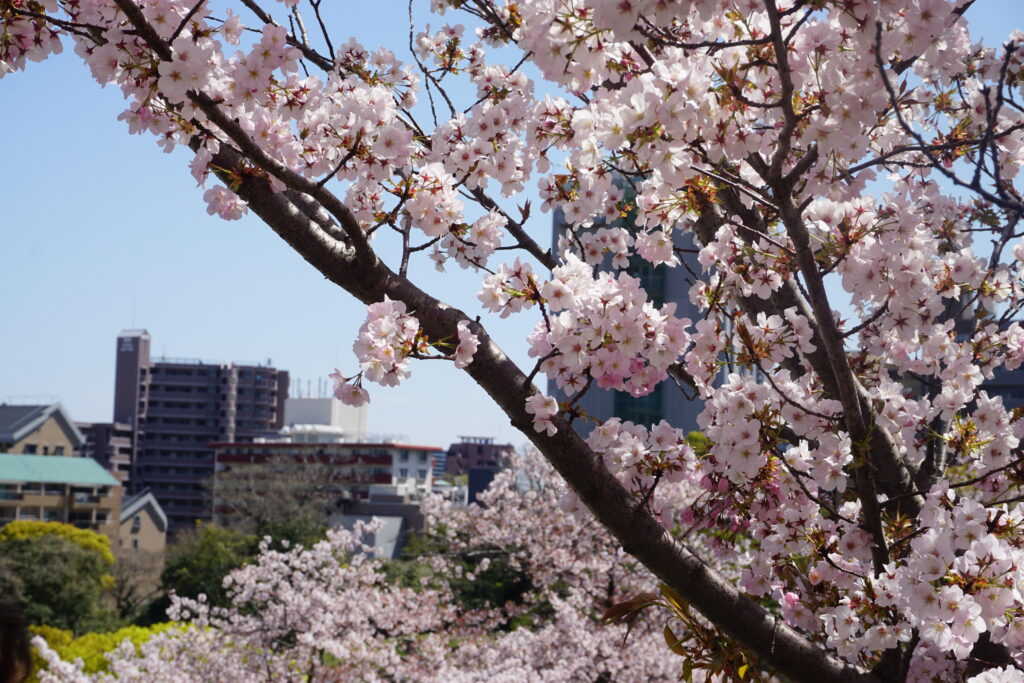
For those that favor a quieter experience, nearby Nishi Park is another great option. Located on a hill near Maizuru, Nishi Park’s approach is a gently sloped road that transforms into a shrine entrance lined with beautiful pink-white sakura. Here, visitors can experience Terumo Shrine.
Further in the park, there are quiet paths and glades where people can walk through and view the sakura, or rest under the trees in quiet small terraced pockets avoiding the large crowds of Maizuru. Although, perhaps the best spot is the overlook of the harbor, which has a stunning view of Hakata Bay and Nokonoshima Island.

Outside of Fukuoka, there are a number of other great places to experience flowers in southern Japan. Near the city of Hiroshima, the sacred Island of Miyajima is a wonderful place for viewing Japanese nature. While most known for its beautiful maple leaves and giant Torii gate, the island’s sakura flowers are quite impressive. They offer many unique spots for scenic photography, ranging from streets with rustic shops to the island’s numerous temples and shrines.
One great example of this is the Island’s Tahoto Pagoda. Surrounded by pink cherries, the darker greens of the nearby forest, and the occasional hazy mist, the pagoda looks like a place straight out of an ancient painting. And it’s hardly alone. Torin, a small park tucked away behind the pagoda, has its own unique flavor. Situated in a terraced bowl on a hillside, the dense cluster of cherry trees at its heart create a beautiful canopy and a unique glow in the evening.
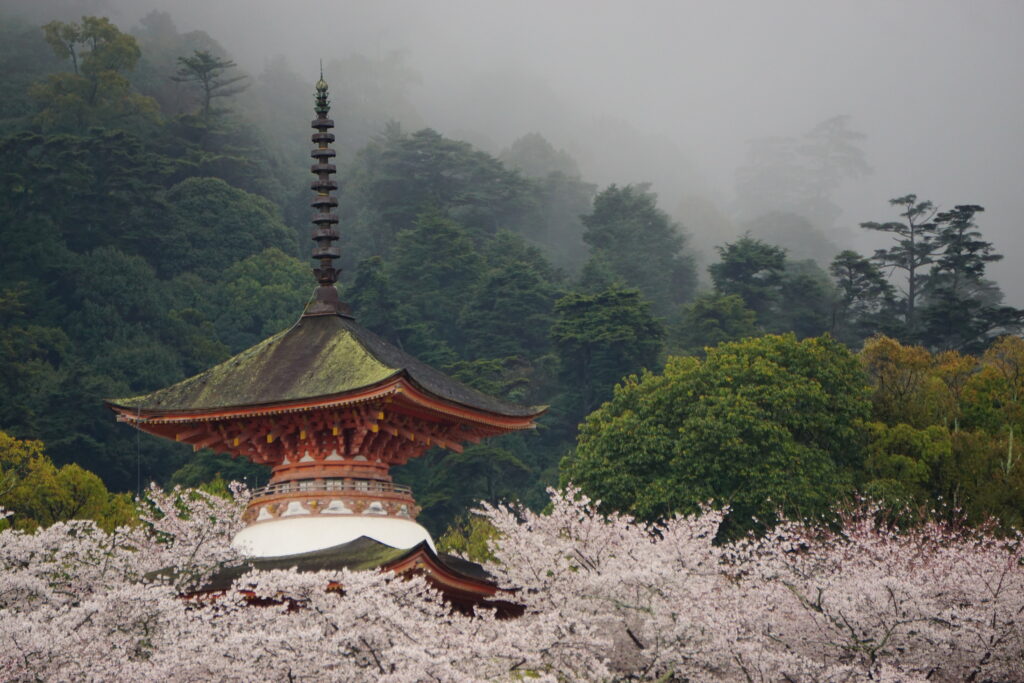
Leading toward Mt. Misen, one of the nearby trails has another unique take on sakura blossoms. In the evening gloom, the local residents light up red and pink lanterns, which hang under the cherry trees. This gives the area a warm, ethereal pink glow, under which the island’s deer gently browse the fallen blossoms.
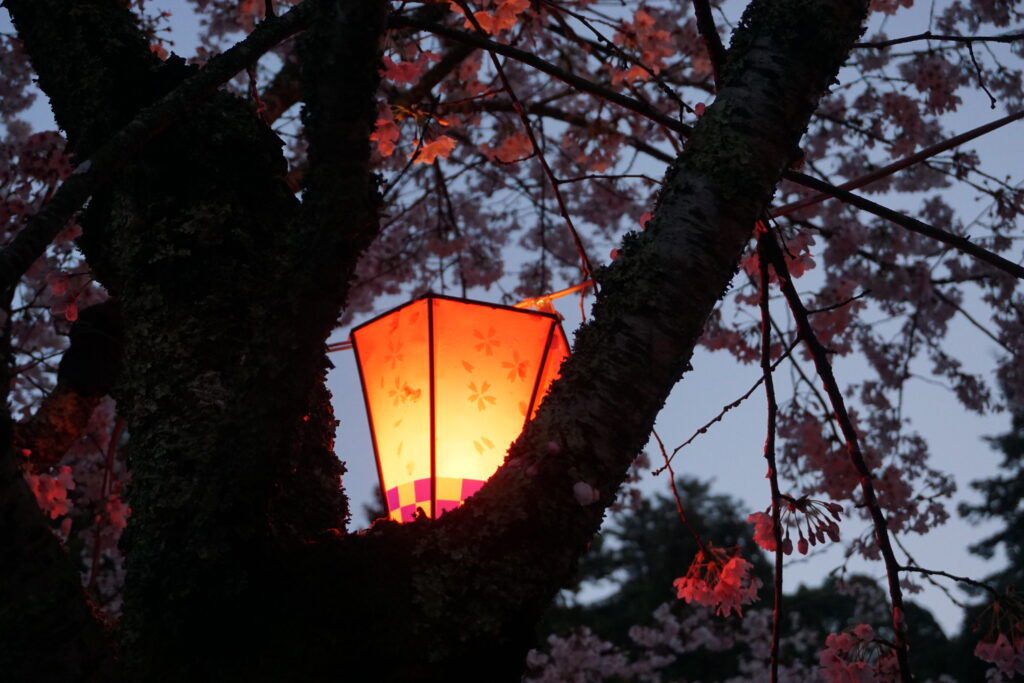
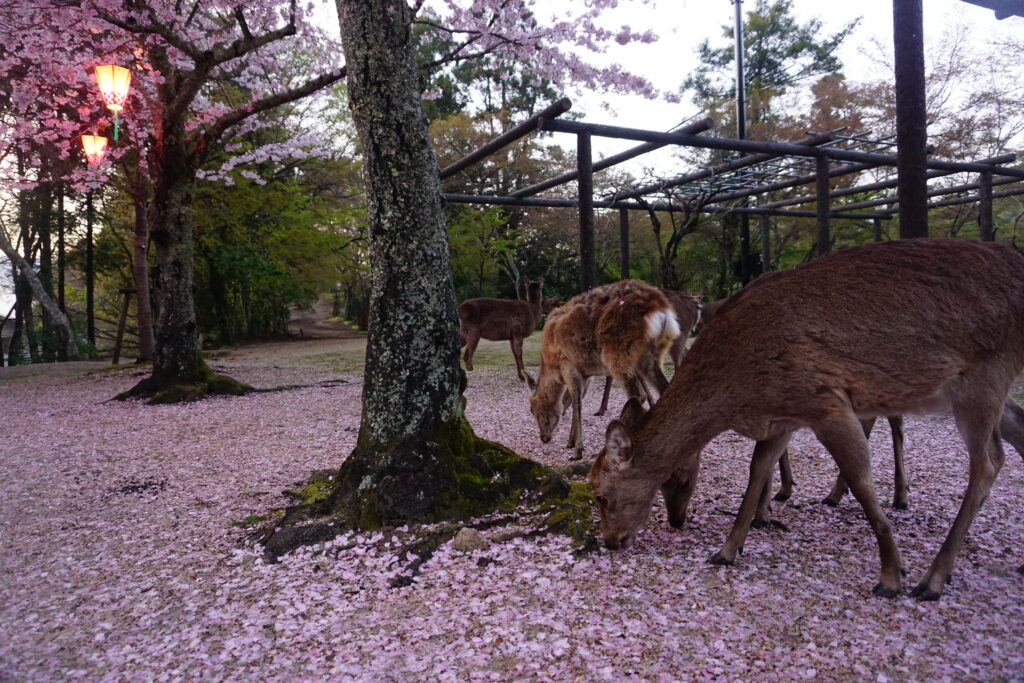
As one of Japan’s most iconic cities, it should come as no surprise that Kyoto is a popular place for cherry blossoms. The city’s old buildings and roads offer a truly unique sakura viewing experience. One great spot is located near the northwestern side of the city near Ginkakuji, the Silver Pavilion. Tetsugaku no Michi, “the Philosopher’s Path,” is a scenic stone canal covered by countless cherry trees that was once favored by the famous thinker Kitaro Nishida, who would frequently enjoy the soothing peace of the trail. In cherry season, one can see why he loved the peaceful road, which is carpeted in pink petals.
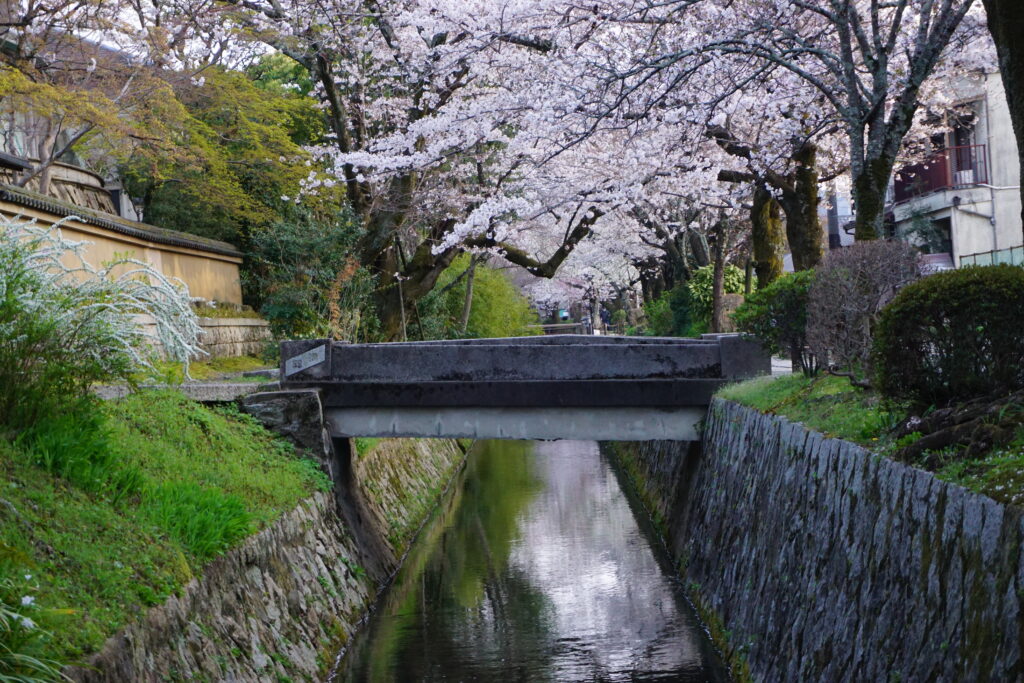
Toward the center of the city, Toji Pagoda towers over Kyoto, as one of the oldest wooden structures in Japan. During spring nights, the grounds of the temple are awash with the glow of weeping cherries as they are underlit by brilliant light. The pink glow and bright outline of the tower, especially paired with the mirror-like quality of the compound’s many ponds, gives rise to a very unusual night experience for viewing cherries.

Perhaps the city’s grandest spot is the cherry grove in the heart of Maruyama Park. Located next to Yasaka Shrine and the old sections of Gion, the park hosts a number of cherry trees and beautiful ponds. The real attraction of the park, however, is the massive weeping cherry tree that towers a whopping 12 meters over visitors. At night, the tree is illuminated during the special Gion no Yozakura event.
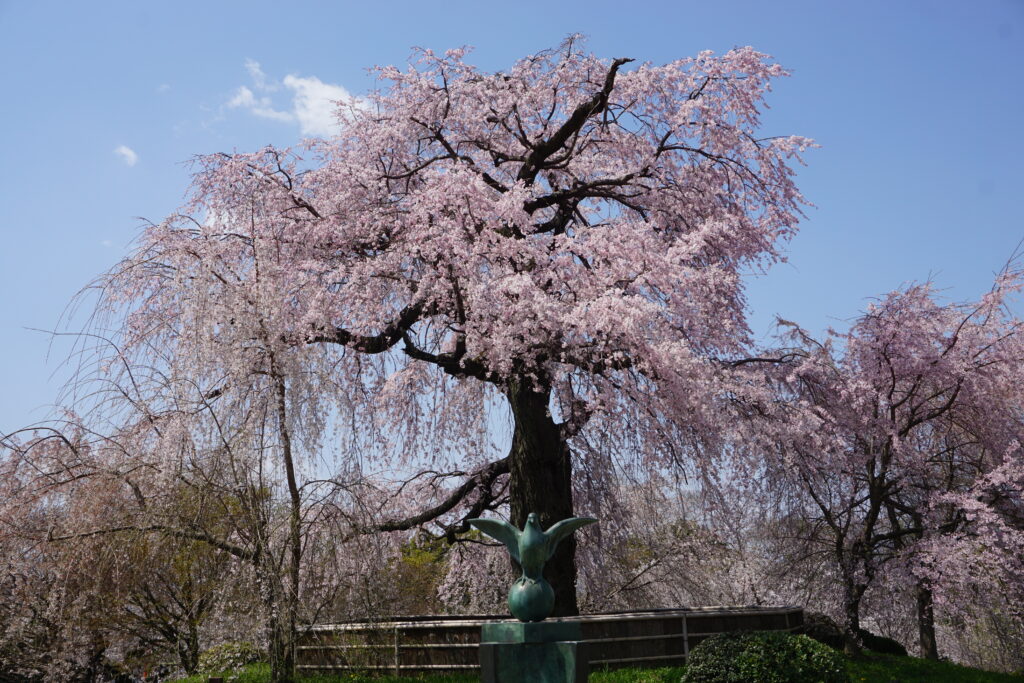
As you can see, Japan offers many different ways to enjoy the end of winter and beginning of spring. From major cities to smaller towns, cherry blossoms to plum trees, there’s no end of viewing options.
Why don’t you try to seek out the flowers of the south?




